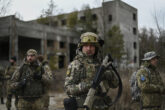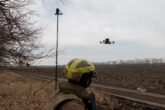May 27, 2025
The U.S. Military Needs to Relearn Nuclear Signaling
For decades, the United States’ extended nuclear deterrent has backstopped nuclear stability and supported nuclear nonproliferation among U.S. allies. Nuclear-sharing agreements and security guarantees have solidified nuclear deterrence, and combined conventional exercises have helped allies and partners feel secure in the face of hostile adversaries.
However, as the Trump administration openly reexamines the extent and depth of its alliance commitments, the credibility of the U.S. extended deterrent is fading. In response, the acquisition of sovereign nuclear capabilities has emerged as a legitimate policy pursuit in Japan, Korea, and Ukraine. These trends portend nuclear proliferation, threatening the nuclear balance and increasing the likelihood of nuclear use.
This deterioration matters because beyond the quantity and quality of the United States’ nuclear forces, nuclear deterrence will rest on the country’s ability to effectively signal.
To address these assurance challenges and bolster deterrence, the Trump administration should restore a long-deteriorated aptitude: U.S. nuclear operations and signaling. Nuclear signaling is the visible, credible communication of a nation’s nuclear capability and resolve. Reinvigorating this skill means restoring the United States’ ability to quickly exercise or deploy tailored, visible, and flexible nuclear forces in a crisis.
Much has been written on expanding and reshaping the United States’ nuclear arsenal to contend with a two-near-peer (2NP) nuclear environment and manage the associated assurance challenges. But developing new nuclear weapons will take years, cost billions, and may only contribute marginal deterrent value.
Read the full article on Foreign Policy.
More from CNAS
-
Defense / Transatlantic Security
When Defense Becomes Destruction: Austria-Hungary’s Mistake and Ukraine’s RiskThis article was originally posted on War on the Rocks. The southeastern Polish city of Przemyśl, with its elegant 19th century Habsburg-era train station, remains one of the ...
By Franz-Stefan Gady
-
Defense / Transatlantic Security
Ukraine’s Catch-22 MomentThis article was originally published in the Financial Times. In Joseph Heller’s wartime classic, Catch-22, the protagonist Yossarian seeks out the US army surgeon Doc Daneeka...
By Franz-Stefan Gady
-
CNAS Insights | Budgetary Own Goals Undermine “Speed and Volume”
On November 7, Secretary of Defense Pete Hegseth laid out a plan to overhaul the Department of Defense’s (DOD’s) acquisition system. Placing an emphasis on delivering new capa...
By Philip Sheers, Carlton Haelig & Stacie Pettyjohn
-
Drones: Who Is Making the New Weapons of War?
From Ukraine and Russia to Gaza and Sudan, drones have become a key weapon of war. Which companies are making them, and profiting from this rapidly expanding but controversial...
By Stacie Pettyjohn




